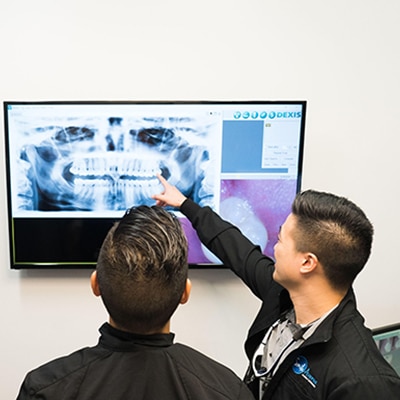Mammogram: What It Is, Types, Purpose & Results
Overview
A mammogram is a specialized medical imaging test used primarily to detect and diagnose breast cancer in its early stages. This procedure plays a crucial role in monitoring breast health and supporting early intervention strategies. There are two main categories of mammograms: digital mammograms and 3D mammograms, each with distinct methodologies and applications. Additionally, mammograms are categorized into screening and diagnostic mammograms, depending on their purpose. Understanding their differences and how they function is vital for women undergoing this test.
Types of Mammograms
- Digital Mammograms: Digital images of the breast are taken and stored on a computer. This approach allows for detailed examination and easy sharing among healthcare professionals.
- 3D Mammograms: Also known as tomosynthesis, this type provides a more comprehensive view of the breast by taking multiple X-ray images from different angles, creating a layered 3D image.
Screening vs. Diagnostic Mammograms
Screening mammograms are routine tests done to detect breast cancer in women who do not exhibit any symptoms, while diagnostic mammograms are more targeted, performed after a suspicious area is detected or following an abnormal screening mammogram. The latter involves more detailed images to closely examine the area of concern.
Benefits of Regular Mammograms
Regular mammograms are crucial for early breast cancer detection, which significantly increases treatment options and the chance of survival. They can identify tumors that are too small to be felt, allowing for earlier intervention. Regular screenings also help track breast health over time, identifying any changes or patterns that may require closer examination.
Detection and Accuracy
Mammograms have the capability to detect cancer and other breast abnormalities early on, significantly impacting treatment and management. While mammography is highly accurate, its effectiveness can vary based on factors such as breast density and the patient’s age.
Test Details
Mammograms are generally performed by specialized radiologists trained in handling the equipment and interpreting the images produced. The procedure involves compressing the breast to spread out the breast tissue for clear imaging. Preparation for a mammogram includes avoiding deodorants or powders that could interfere with the test’s accuracy. During the procedure, patients may experience discomfort, but this is typically short-lived. The mammogram itself takes about 20 minutes, and the procedure is considered safe with minimal exposure to radiation.
During and After the Procedure
Patients can expect some degree of discomfort during the compression of the breast but are usually able to resume normal activities immediately after the mammogram. It’s common for the radiology department to provide results within a few weeks, advising on any follow-up steps if necessary.
Results and Follow-Up
The outcomes of a mammogram are communicated through a BI-RADS score, which categorizes findings from 0 (incomplete) to 6 (known cancer). These results guide the next steps, which could range from routine monitoring to further diagnostic testing for abnormal findings. A normal mammogram result means no suspicious areas were found, but it’s important to continue regular screenings as advised.
Interpretation of Mammogram Results
- A normal mammogram shows no abnormalities and usually leads to a recommendation for regular screening intervals.
- An abnormal mammogram may reveal a variety of findings, necessitating further evaluation to determine the nature of the irregularity.
Risks and Considerations
Although mammograms are an invaluable tool in breast cancer detection, there are some risks and considerations to be aware of. The exposure to low-dose radiation has a minimal risk of harmful effects, but the benefits of detection far outweigh these risks. False positives can occur, leading to additional testing and anxiety, while false negatives can miss cancers. Dense breast tissue can also make mammograms less effective, necessitating alternative or supplementary imaging processes.
Additional Common Questions
- Having breast implants can complicate mammograms but doesn’t interfere with the procedure. Special techniques are used to ensure as clear a view as possible of the breast tissue.
- It is generally advised to schedule a mammogram before receiving a COVID-19 vaccine or to wait several weeks after vaccination due to the temporary lymph node swelling the vaccine can cause, which might affect the mammogram results.
In conclusion, mammograms remain a critical component of breast health strategy, offering early detection of breast cancer and other abnormalities. Understanding the types of mammograms, their benefits, how the procedure works, and what the results mean can empower individuals to make informed decisions about their health. Despite some limitations and risks, the potential life-saving benefits underscore the importance of regular mammogram screenings as part of a comprehensive health care plan.








